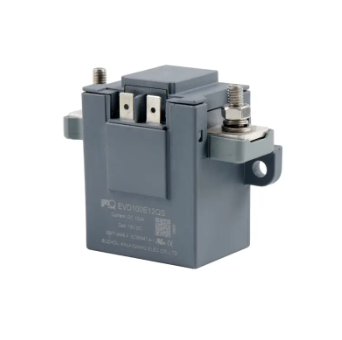- All
- Product Name
- Product Keyword
- Product Model
- Product Summary
- Product Description
- Multi Field Search
English
Views: 0 Author: Site Editor Publish Time: 2025-01-03 Origin: Site









Energy storage systems (ESS) are increasingly becoming a crucial component in the modern energy landscape, helping to balance supply and demand, integrate renewable energy sources, and provide backup power. A key component in these systems is the high voltage DC (HVDC) contactor. This article explores the role of HVDC contactors in energy storage systems, their importance, and the factors to consider when selecting one.
High voltage DC (HVDC) contactors are electromechanical devicesdesigned to switch high voltage direct current (DC) circuits on and off. They are essential in applications where high voltage DC circuits need to be controlled, such as in energy storage systems, renewable energy systems, and high voltage transmission systems.
HVDC contactors operate on the principle of electromagnetism. When voltage is applied to the coil of the contactor, it generates a magnetic field that attracts a movable armature. This armature is connected to one or more contacts that open or close the circuit. When the voltage is removed, a spring mechanism returns the armature to its original position, opening or closing the circuit as needed.
There are several types of HVDC contactors, each with its own unique characteristics and applications:
HVDC contactors are used in a variety of applications, including:
Energy storage systems (ESS) are increasingly being used to balance supply and demand in the electrical grid, integrate renewable energy sources, and provide backup power. HVDC contactors play a critical role in these systems, ensuring their safe and efficient operation.
HVDC contactors are essential in energy storage systems for several reasons:
HVDC contactors ensure safety and efficiency in energy storage systems by:
Several case studies highlight the role of HVDC contactors in energy storage systems:
When selecting a high voltage DC (HVDC) contactor for an energy storage system, several key considerations must be taken into account to ensure optimal performance, safety, and reliability.

The voltage and current rating of the HVDC contactor must match the requirements of the energy storage system. This includes:
The switching capacity of the HVDC contactor is critical for its performance in the energy storage system. This includes:
The mechanical and electrical endurance of the HVDC contactor is important for its reliability and longevity. This includes:
Environmental considerations are also important when selecting an HVDC contactor for an energy storage system. This includes:
High voltage DC (HVDC) contactors are essential components in energy storage systems, ensuring their safe and efficient operation. When selecting an HVDC contactor, it is important to consider factors such as voltage and current rating, switching capacity, mechanical and electrical endurance, and environmental considerations. By carefully selecting the right HVDC contactor, energy storage systems can operate more reliably and efficiently, helping to balance supply and demand in the electrical grid and integrate renewable energy sources.